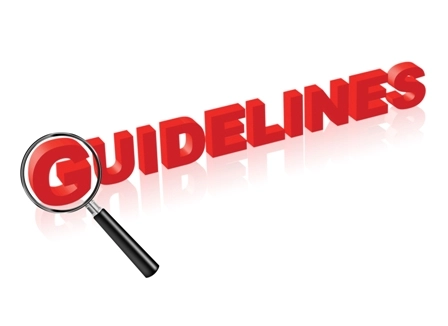ED Coding and Reimbursement Alert
Prep Now for Big Changes to PICC Line, FNA Codes Effective Jan. 1
Break out the red pen and prepare for a code overhaul.
Sometimes it feels like we just turned the calendar to 2018, but the New Year is almost on the horizon, which means it’s time to welcome new codes. CPT® 2019 will add almost 200 new procedure codes, most of which will not impact EDs. However, it’s essential that you get to know the few that will affect you, because your reimbursement could be on the line if you don’t report them.
Prep Now for Big PICC Line Changes
Chances are strong that your ED bills for PICC line insertions, often used as essential tools in delivering antibiotics or other medications to patients. In the past, you’ve been reporting the appropriate PICC line codes along with a separate code for imaging guidance, but the new year will bring a fresh set of codes that will bundle the PICC line insertion with the imaging guidance, allowing you to report just one code instead of submitting multiple line items on your claims.
The two new codes that include imaging guidance are as follows:
- 36572 – Insertion of peripherally inserted central venous catheter (PICC), without subcutaneous port or pump, including all imaging guidance, image documentation, and all associated radiological supervision and interpretation required to perform the insertion; younger than 5 years of age
- 36573 – … age 5 years or older
Naturally, these new additions mean that CPT® had to revise the existing codes in the PICC line placement set to clarify that imaging is not included in those. You’ll use these revised codes when the provider inserts a PICC line without the assistance of imaging guidance. Emphasis added by ED Coding Alert – the bolded words are new for 2019:
- 36568 – Insertion of peripherally inserted central venous catheter (PICC), without subcutaneous port or pump, without imaging guidance; younger than 5 years of age
- 36569 – Insertion of peripherally inserted central venous catheter (PICC), without subcutaneous port or pump, without imaging guidance; age 5 years or older
The final adjustment to this code set involves the PICC line replacement code 36584, which has been revised to indicate that imaging guidance, documentation, and radiological supervision/interpretation are all included in payment for the service. The revised code is as follows, with the new verbiage bolded by ED Coding Alert:
- 36584 – Replacement, complete, of a peripherally inserted central venous catheter (PICC), without subcutaneous port or pump, through same venous access, including all imaging guidance, image documentation, and all associated radiological supervision and interpretation required to perform the replacement.
According to CPT® 2019, “’Midline’ catheters by definition terminate in the peripheral venous system. They are not central venous access devices and may not be reported as a PICC service. Midline catheter placement may be reported with 36400, 36405, 36406, or 36410. PICCs placed using magnetic guidance or any other guidance modality that does not include imaging or image documentation are reported with 36568, 36569.”
Prep for Major FNA Updates
If your ED performs fine needle aspiration (FNA), you’ll find big changes awaiting you in the latest edition of CPT®. Much like the PICC code changes, the updates to FNA codes involve radiological guidance and include nine additions (10004-+10012), one revision (10021), and a deletion of 10022 (Fine needle aspiration; with imaging guidance).
The reason 10022 is being deleted is because the American Medical Association’s Relativity Assessment Workgroup identified it “as being reported together with [ultrasound code] 76942 more than 75 percent of the time, resulting in referral to the CPT® Editorial Panel for a bundling,” the American College of Radiology said on its website.
Existing code 10021 has been revised, with the new descriptor reading “Fine needle aspiration biopsy, without imaging guidance; first lesion.” The bolded words are new for 2019 and reflect the fact that CPT® is creating additional add-on codes to reflect additional lesions that the physician addresses.
The new codes reflect the type of guidance used, as well as add-on codes for additional lesions. For instance, the following codes will join the CPT® ranks effective Jan. 1:
- +10004: Fine needle aspiration biopsy, without imaging guidance; each additional lesion (List separately in addition to code for primary procedure)
- 10005: Fine needle aspiration biopsy, including ultrasound guidance; first lesion
- +10006: Fine needle aspiration biopsy, including ultrasound guidance; each additional lesion (List separately in addition to code for primary procedure)
- 10007: Fine needle aspiration biopsy, including fluoroscopic guidance; first lesion
- +10008: Fine needle aspiration biopsy, including fluoroscopic guidance; each additional lesion (List separately in addition to code for primary procedure)
The remaining codes describe FNA with CT guidance (10009 and +10010) or with MR guidance (10011 and +10012).
Example: Suppose a patient presents to the ED with two separate abscesses and the physician performs a needle aspiration biopsy on both without imaging guidance. In this case, you’d report 10021 and one unit of +10004. You’ll note that these codes are out of sequence, but they do appear on the same page in most CPT® manuals, which is helpful for reference.
Related Articles
ED Coding and Reimbursement Alert
- CPT® 2019:
Prep Now for Big Changes to PICC Line, FNA Codes Effective Jan. 1
Break out the red pen and prepare for a code overhaul. Sometimes it feels like [...] - Medicare Documentation:
5 Tips Help You Meet Medicare's Signature Requirements
Hint: You can send signature logs, attestations routinely without repercussions. You pore over your medical [...] - Modifiers:
Seeing Patients Following A Disaster? You May Need Modifier CR
Cover your post-disaster coding and billing with these quick tips. We’re still in the midst [...] - You Be the Coder:
Can You Code This Abdominal Pain Scenario?
Question: A 25-year-old man presented to the ED with abdominal pain. The physician noted complaints [...] - Reader Question:
Get the Scoop on this Fracture Dx
Question: I have a claim in front of me that is completely bewildering. Notes indicate [...] - Reader Question:
How Important Are Finger/Toe Modifiers?
Question: We had a private consulting firm audit our records recently, and they determined that [...] - Reader Question:
Should Our ED Be on Social Media?
Question: We attended a presentation by a health care marketing organization who said we should [...]




